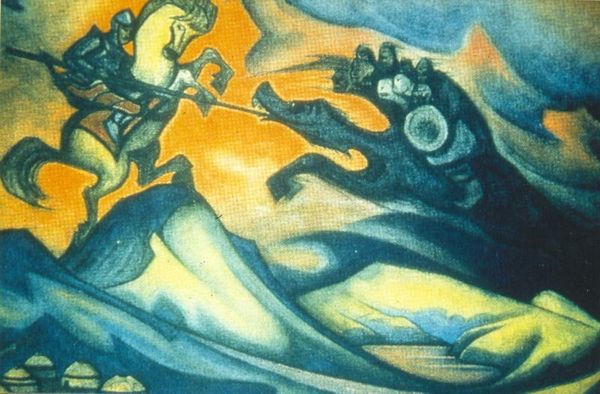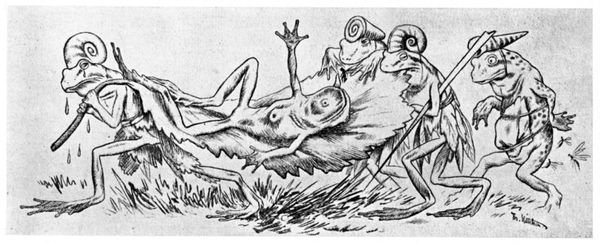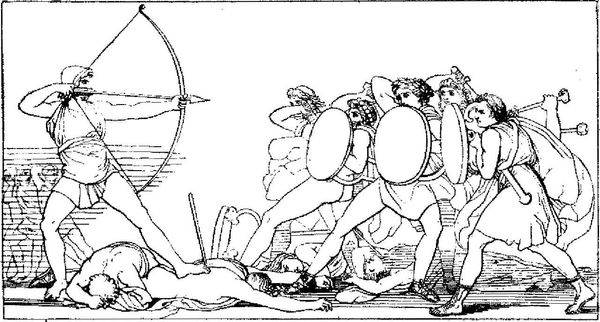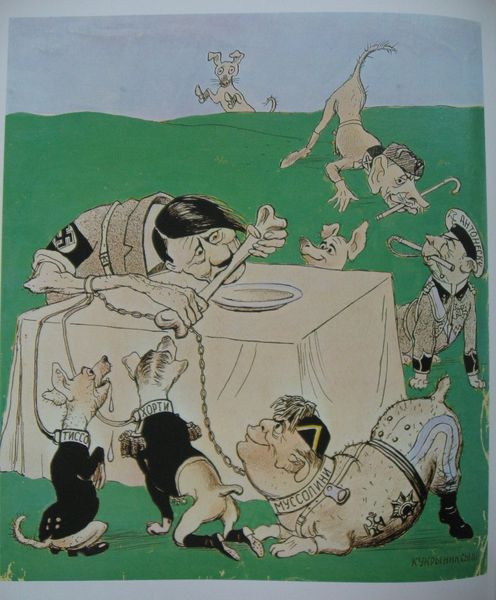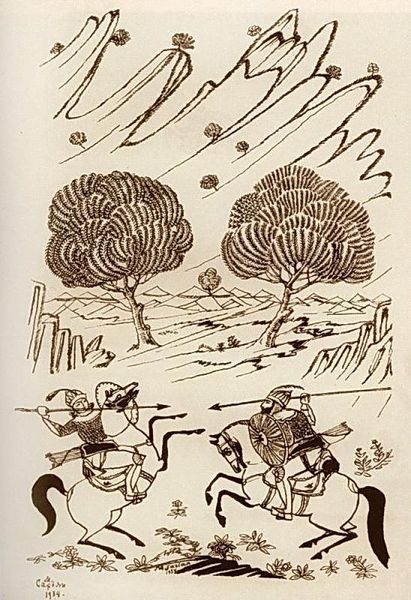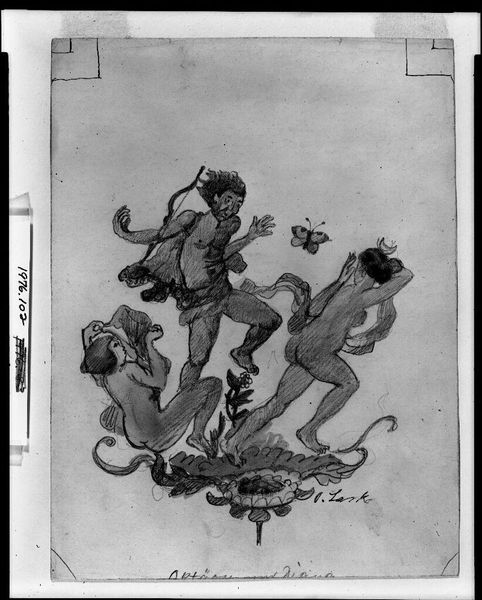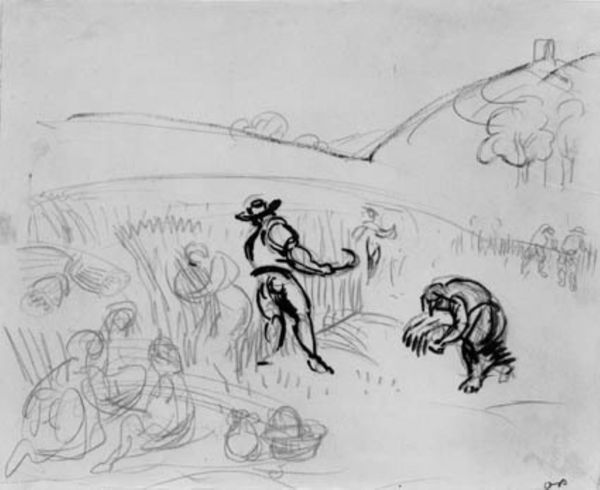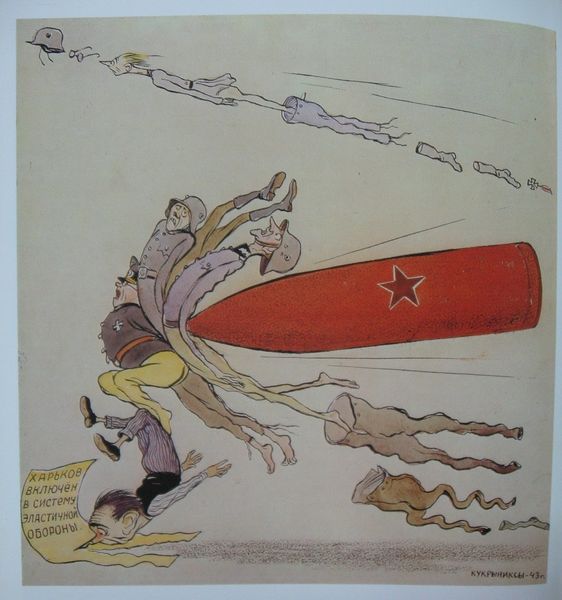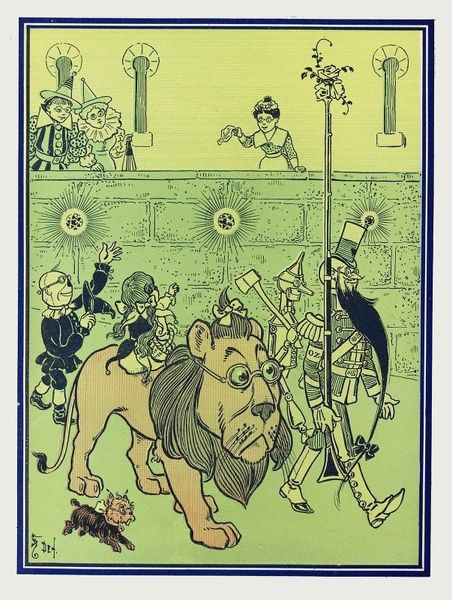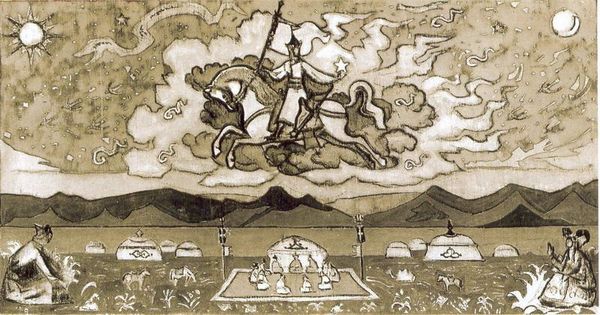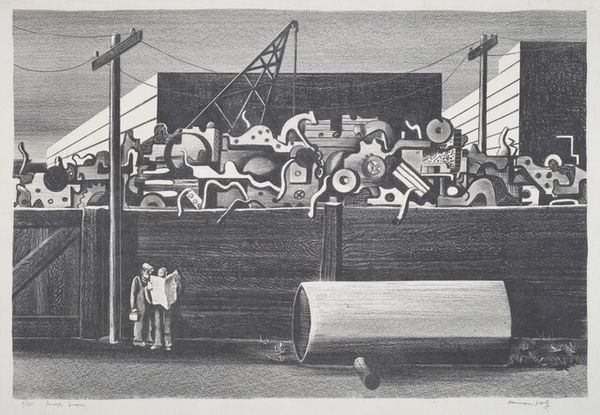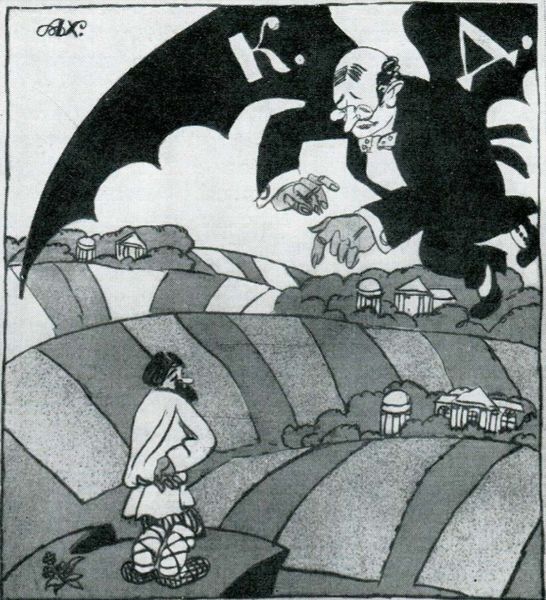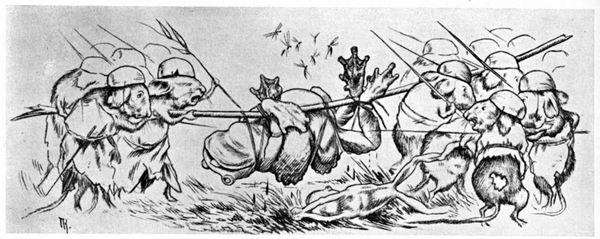
Copyright: Public domain
Curator: Looking at "Car and Hunting Fox," painted around 1904 by Umberto Boccioni using gouache and watercolor, I immediately get a sense of breathless motion—chaos even. What strikes you first? Editor: It's the absurdity, actually. The layering of different historical modes of transportation. You have horseback riders, the hunting dogs...and then this bright blue car careening into the scene, all set against that very unusual drab, matte green backdrop. Curator: Precisely. Boccioni is playing with notions of modernity versus tradition here. Think about the symbolism of the hunt, a ritual ingrained in aristocratic culture for centuries. Then you have the car, a new symbol of progress, a disruptive force, barging in – literally chasing after – this old world. Editor: I see it as an almost satirical commentary on the relentless march of technology. The car isn't smoothly integrated; it’s imposing itself upon this established order. The dynamism in the composition and the use of impasto further accentuates this forced interaction. Are we to believe that it represents a march into a chaotic, new future, disrupting the status quo of art production and its social impact? Curator: That's where the cultural memory aspect is significant. Consider the symbolism of the fox hunt itself, predating these more recent developments. Its historical significance still evokes certain cultural emotions that stand in sharp contrast to the idea of automotive invention. There is a cognitive dissonance created that is hard to ignore, and is heightened further through this contrast. Editor: But what is really so hunting in the car here? Are we just watching this accident unfold from Boccioni? In other words, is the artist not asking if progress is always forward, or also potentially destructive? Or both simultaneously? Curator: I appreciate how the animal itself embodies these competing interests: The instinct of wild freedom is brought into question within the context of an engineered capture—a powerful depiction that prompts the viewer to think more critically about our place in an accelerated culture and world. Editor: Right, because thinking about it, "Car and Hunting Fox" could very well express a kind of anxiety regarding the machine’s capacity to reshape society's institutions—specifically its traditional social rituals and roles. Curator: Agreed. This pushes us to really think through how images, even those seemingly straightforward, embody deeply ingrained cultural dialogues. Editor: It gives a snapshot into an early 20th-century struggle to come to terms with accelerating social and technological shifts, so visible through the lens of art production and reception at that moment in time.
Comments
No comments
Be the first to comment and join the conversation on the ultimate creative platform.
